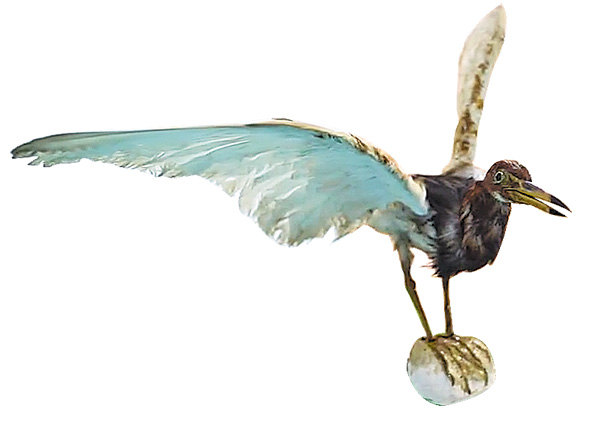

"If a species can only be appreciated in this form, as well as feeling regret, we should think further — when people destroy the habitats of animals and plants, how much space do we leave for our own survival?" Li says.
Among his taxidermied works, some rodents and insects are captured and modeled for epidemiological research. Some of these are birds, animals and fish bought from local farmers' markets or restaurants, and some are sent to him by local authorities for taxidermy display or study.
A pair of wild Chinese milu deer are among the most challenging specimens that Li has worked on. In July 2016, the pair were drowned in rising floodwaters at the lake. After salvaging the deer and carrying out a postmortem, the Yuanjiang Forestry Bureau contacted Li to preserve them.
Weighing more than 400 kilograms in total, it took Li one and a half months to get the deer to "stand on their feet" again. He had to conquer the scorching heat of summer and pungent odor of the disinfectant, because if the corpse decayed, the taxidermy would fail.
According to Li, this is a complex process. After measuring the body, the deer is skinned with its meat, skull, bones and internal organs removed. While the skin dries out, the steel-framed mannequin is prepared. After anti-corrosion treatment, the deer is mounted with its skin repositioned around the mannequin, its feet arranged and glass eyes are inserted for the final touch.
"You can't rush any step. One mistake can ruin the whole thing," Li says, adding that the larger the animal is in size, the longer the taxidermy process is.
In sculpting the steel mold for one of the deer, Li's left leg was injured by an electric cutter. To save time, Li didn't go to hospital, he just sutured the wound by himself.
However, when he got the two deer to "stand as if they were alive again", Li's sense of achievement outweighed the difficulties.
"For some people, the practice of taxidermy may seem strange, or even terrifying, but preserving nature through individual lives is still valuable in scientific research and showcases the great diversity of nature to the public," Li says.